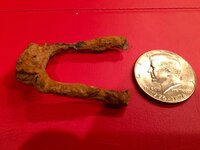Joe73
Tenderfoot
- Jul 30, 2017
- 7
- 12
- Detector(s) used
- Whites TreasurePro
- Primary Interest:
- Relic Hunting
Amazon Forum Fav 👍
Last edited:
Follow along with the video below to see how to install our site as a web app on your home screen.
Note: This feature may not be available in some browsers.
 And, please keep us informed about what you find.
And, please keep us informed about what you find.